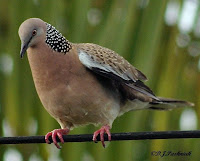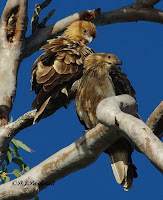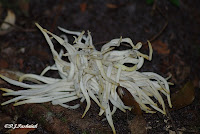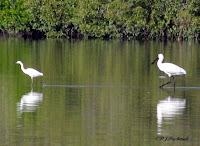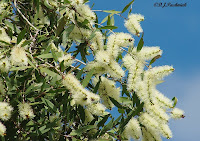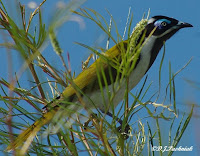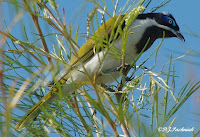I walked north along the foreshore from the Mullens Creek picnic area the other morning. The Paperbarks are in flower right now. Of course they flower every year about this time, but some years they produce a very heavy crop of honey and this must be one of those years. There were birds everywhere among the flowers and so busy that they seemed to ignore me and my camera. The Wattles were also flowering - more pollen than nectar from their flowers. Even the Mistletoe was in flower.

The tide was low and I walked to the saltmarsh flats and along the southern edge where the trees meet the saltmarsh plants.

Looking the other way the bay was totally empty of any water. Its hard to imagine that at very high tide the water here is 1-2 meters deep.

I have never seen and heard so many birds in this area. The flowers must have also attracted all kinds of insects and the insect eating birds were also making the most of the feast!
Mangrove Honeyeaters were everywhere - not worried how close I came as long as they had a few leaves to hide among.

Brown Honeyeaters were also making the most of the nectar - but not quite so easy to get close to.

Grey Fantails perched on branches and then flew off with a dive and a flutter after the insects.

Mistletoebirds were making similar swift darts high in the trees.

There were Rufous Whistlers around but only the female came close enough for photos.

A Varied Triller came down close for a short time.

There were numbers of Scarlet Honeyeaters high in the trees but they would not sit still for more than a rather blurred photo!

A Striated Pardalote was in a low tree close to where I had left the car. A very nice finish to an exceptional morning of bird watching.

I went back to the same place the next day and took more notice of the larger birds. I saw Noisy Friarbirds, Little Friarbirds, Little Wattlebirds, Rainbow Lorikeets, a Restless Flycatcher, and a Black-faced Cuckoo-shrike.


